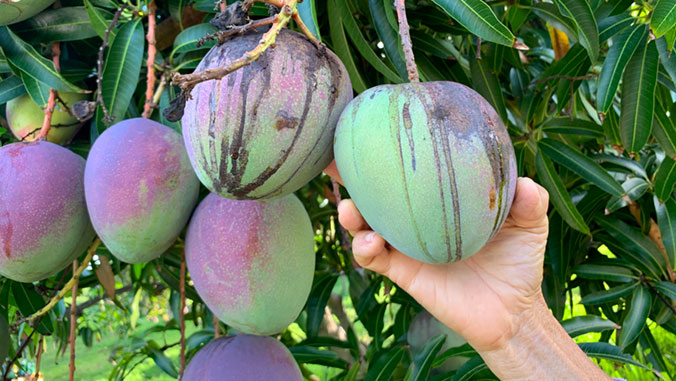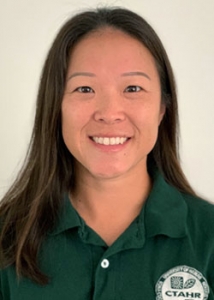
With U.S. organic food sales topping $50 billion in 2018, statistics from the Organic Trade Association indicate that fruits, vegetables and other specialty crops combined make up 36.3 percent of total organic sales, up 5.6 percent from 2017. In order to meet consumer demand, farmers may need to use essential oils to battle pests and diseases that often accompany organic crop growth.
Solutions to improve the feasibility and long-term profitability of organic fruit production is the basis of a nearly $2 million Organic Agriculture Research and Extension Initiative awarded by the U.S. Department of Agriculture (USDA)-National Institute of Food and Agriculture to a team of 15, including Associate Extension Agent Andrea Kawabata of the University of Hawaiʻi at Mānoa’s College of Tropical Agriculture and Human Resources (CTAHR) Cooperative Extension in Kona.

The four-year project is titled, “Plant Safety, Horticultural Benefits, and Disease Efficacy of Essential Oils for Use in Organically Grown Fruit Crops: From the Farm to the Consumer.”
CTAHR researchers and extension faculty will work with certified organic producers in Hawaiʻi and four other states (Florida, South Carolina, Georgia and California) to evaluate the effectiveness of organically certified plant essential oils (EOs) on major fruit pathogens such as avocado scab, anthracnose (fungal disease), and powdery mildew in targeted tropical and temperate fruit crops such as avocado, mango, blueberry and peach.
Efforts will look at increasing organic orchard productivity of Hawaiʻi‘s more than $2.4 million avocado and mango industries and offering growers an organic spray program using organic plant EOs. The goal is for crop producers to rapidly adopt the organic practices set forth by the researchers as a result of the data they gathered, thus improving their market competitiveness.
“By being the boots on the ground, I will assist researchers and growers with data collection, as well as conduct the project’s Hawaiʻi outreach and communicate project results to the farming community,” said Kawabata.
Lisa Keith, research plant pathologist at the USDA-Agricultural Research Service in Hilo, is among the researchers collaborating on the project.

